Plant Information Resource Center
A Service Provided by Bohn's Farm and Greenhouses
Salvia 'Crystal Blue'Salvia, Perennial
Salvia is a staple item for every sunny garden. It asks little more than sunshine and a little drink every once in a while in return for producing a bountiful mass of colorful flower spires from late spring into early summer. It forms a dense, rounded clump of aromatic, rugose grey-green foliage that looks nice all season long and is not enjoyed by rabbits or deer.
‘Crystal Blue’ Salvia is the first of its kind—an incredibly unique light sky blue (most perennial Salvias are darker purple), a cool shade perfectly fitting for a perennial that blooms relatively early in the season.
[
More Info
]
|

|
Salvia 'Midnight Model'Salvia, Perennial
Vibrant blue flowers that surpass the other blue perennial salvias bloom atop a dense clumping habit. Sun-loving salvias are easy to grow, unfussy plants.
[
More Info
]
|

|
Salvia 'Pink Dawn'Salvia, Perennial
Salvia is a staple item for every sunny garden. It asks little more than sunshine and a little drink every once in a while in return for producing a bountiful mass of colorful flower spires from late spring into early summer. It forms an upright clump of aromatic, rugose green foliage that looks nice all season long and is not enjoyed by rabbits or deer.
‘Pink Dawn’ Salvia produces a cloud of sizable, cotton candy pink blossoms which pop open from fuchsia buds held on purplish stems from late spring into early summer. Compared to other pink Salvias, it is a bit longer blooming due to its well-branched flower stems.
[
More Info
]
|

|
Salvia 'Violet Riot'Salvia, Perennial
Salvia is a staple item for every sunny garden. It asks little more than sunshine and a little drink every once in a while in return for producing a bountiful mass of colorful flower spires from late spring into early summer. It forms a uniform, rounded clump of aromatic, rugose green foliage that looks nice all season long and is not enjoyed by rabbits or deer.
‘Violet Riot’ Salvia produces a riot of vivid violet blue flowers with deep purple calyxes from late spring into early summer. Compared to the industry standard ‘May Night’, it has a much denser habit, a more concentrated show of color, and a neater habit in containers, increasing its impulse appeal at retail.
[
More Info
]
|

|
Salvia 'Wesuwe'Salvia, Perennial
Early bloomer with a relaxed, vertical habit. Spikes of vibrant purple intensify the garden. Gray-green foliage develops nice mounds. Will rebloom if cut back. Can be found in the Lurie Garden, Chicago Illinois.
[
More Info
]
|

|
Salvia azureaSage, Blue
[
More Info
]
|

|
Salvia nemorosa 'BLUE HILL Blauhugel'Salvia, Perennial
Dense spikes of long-blooming, true blue flowers on compact plants. Plants are not as upright as 'May Night'.
[
More Info
]
|

|
Salvia nemorosa 'Bumbleblue'Salvia, Perennial
Intense violet blue flowers bloom profusely on this short plant in late spring. A feast for your eyes, and for the pollinators!
[
More Info
]
|

|
Salvia nemorosa 'Bumblesky'Salvia, Perennial
Beautiful sky blue flowers bloom profusely on this short plant in late spring. A feast for your eyes, and for the pollinators!
[
More Info
]
|

|
Salvia nemorosa 'Caradonna'Salvia, Perennial
Violet-blue flowers June through September on dark purple stems. Aromatic foliage resists rabbits and deer. Heat and humidity tolerant. The most rigid form of all perennial salvias.
[
More Info
]
|
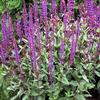
|
Salvia nemorosa 'Marcus'Salvia, Perennial
A dainty new salvia with violet-purple flowers. Will bloom all summer if deadheaded. PP13322
[
More Info
]
|

|
Salvia nemorosa 'MAY NIGHT Mainacht'Salvia, Perennial
Dense spikes of long-blooming, deep purple flowers on vase-shaped plants. This outstanding cultivar tends to be more rigid in form than other perennial Salvias. Aromatic foliage resists rabbits and deer. 1997 Perennial Plant of the Year.
[
More Info
]
|

|
Salvia nemorosa 'New Dimension Blue'Salvia, Perennial
Dwarf variety has dense spikes of deep purple flowers in June on compact, aromatic foliage. Will repeat bloom throughout summer if deadheaded to basal foliage and given regular moisture.
[
More Info
]
|

|
Salvia nemorosa 'New Dimension Rose'Salvia, Perennial
Dwarf variety has dense spikes of deep rose flowers in June on compact foliage. Will repeat bloom throughout summer if deadheaded to basal foliage and given regular moisture.
[
More Info
]
|

|
Salvia nemorosa 'SNOW HILL Schneehugel'Salvia, Perennial
Pure white flower spikes rise above compact mounds of gray-green foliage. Blooms into summer if deadheaded. Sport of 'Blue Hill'.
[
More Info
]
|

|
Sambucus canadensisElderberry
[
More Info
]
|

|
Saururus cernuusLizard Tail
[
More Info
]
|

|
Scabiosa columbaria 'Blue Note'Pincushion
A lovely dwarf pincushion flower, with lavender-blue blooms on grey-green foliage. Likes sandy, dry soil and needs good drainage, especially in winter. Deadhead occasionally to maintain a neat appearance.
[
More Info
]
|

|
Scabiosa columbaria 'Butterfly Blue'Pincushion Flower
A profusion of lavender-blue flowers on wiry stems from April through October. A cool season perennial tolerating heat. Needs excellent soil drainage. [PPA-2000]
[
More Info
]
|

|
Scabiosa columbaria 'Pink Mist'Pincushion Flower
Pincushion-like, pink flowers with a hint of lavender are borne atop wiry stems all season. Drought tolerant once established. A reliable, long blooming selection.
[
More Info
]
|

|
Schizachyrium (syn Andropogon) scopariumGrass, Little Bluestem
Green to blue-green leaves turn deep red in the fall. One of our native prairie grasses that is perfectly suited to hot humid summers.
[
More Info
]
|

|
Schizachyrium (syn Andropogon) scoparium 'Blaze'Grass, Little Bluestem
Valued ornamentally for its vivid red fall foliage. In winter it remains a standout as the leaves fade to deep pink. Easily grown and adapts to any soil type, including clay. Heat and drought tolerant.
[
More Info
]
|
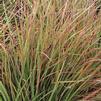
|
Schizachyrium (syn Andropogon) scoparium 'Blue Heaven'Grass, Little Bluestem
Tall, upright form with beautiful blue-grey foliage that turns to burgundy red with purple and violet highlights in fall. The fall color lasts well into November. Small, fluffy white flowers form in late summer.
[
More Info
]
|

|
Schizachyrium (syn Andropogon) scoparium 'Carousel'Grass, Little Bluestem
An improved selection of the native bluestem, with stems that remain sturdy through the winter. Compact blue-green foliage turns shades of copper, beiges and oranges in the autumn.
[
More Info
]
|

|
Schizachyrium (syn Andropogon) scoparium 'Prairie Blues'Grass, Little Bluestem
An improved selection of the native bluestem. It offers striking gray-blue, upright foliage that takes on reddish-orange tones in the fall. Fluffy silver seed heads from late summer well into fall.
[
More Info
]
|

|
Schizachyrium (syn Andropogon) scoparium 'Smoke Signal'Grass, Little Bluestem
This selection of our native Schizachyrium has a beautifully refined habit and puts forth a strong show of color in late summer and fall. The glaucous blue-green foliage begins to take on scarlet red tones in late summer, turning a deeper red-purple through the fall. Tiny, tan seed heads appear in early fall on the top half of the stems.
An improvement over older cultivars, this grass maintains its strictly upright habit through fall.
Schizachyrium is a great choice if you are looking to restore an eroded site, or for a plant that will grow in hot, dry areas where other plants have a hard time surviving.
[
More Info
]
|

|
Schizachyrium (syn Andropogon) scoparium 'The Blues'Grass, Little Bluestem
A very blue selection of the species with exceptional burgundy fall color. Tolerates heat and humidity and is great for mass planting.
[
More Info
]
|
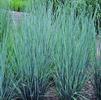
|
Schizachyrium (syn Andropogon) scoparium 'Twilight Zone'Grass, Little Bluestem
We are so excited to bring you this new Schizachyrium because it was a total standout in our trials. Though native Schizachyriums typically color up in fall, the new ‘Twilight Zone’ possesses a nearly iridescent silvery mauve purple cast all over the whole plant beginning in midsummer. It retains these eerily beautiful tones through fall when brighter purple highlights appear on the flower stems. The attractive foliage forms a strictly upright, narrowly columnar clump that is about half as wide as it is tall.
This grass would be stunning in combination with silver foliage plants like Silver Mound Artemisia in a sunny, hot, dry spot in the landscape.
Schizachyrium is a great choice if you are looking to restore an eroded site, or for a plant that will grow in hot, dry areas where other plants have a hard time surviving.
[
More Info
]
|

|
Scutellaria incanaSkullcap, Hoary
Blooms July through September.
[
More Info
]
|

|
Sedum 'Autumn Fire'Stonecrop
[
More Info
]
|

|
Sedum 'Autumn Joy'Stonecrop
Fleshy green leaves are topped with flowers that resemble flat heads of broccoli. Flower buds are green in midseason then turn to pink before opening rosy bronze. Flower heads dry on the plant and provide winter interest. Grow in lean dry soil.
[
More Info
]
|

|
Sedum 'Carl'Stonecrop
Upright form producing flat clusters of magenta flowers in August. Succulent foliage is smooth gray-green throughout the growing season. Easy to grow. Drought tolerant. Attracts songbirds.
[
More Info
]
|

|
Sedum 'Cherry Tart'Stonecrop
This new groundcover type Sedum offers never-before-seen cherry red foliage and a short, compact mounded habit. It holds its red foliage color from spring through fall. Large clusters of pink flowers top the colorful foliage from late August thru September.
Low, spreading Sedums form a solid mat of foliage which is excellent for covering slopes or can be planted as a groundcover in sunny, dry areas. They are extremely drought tolerant and many are evergreen. These are terrific low-maintenance plants that always look their best.
[
More Info
]
|

|
Sedum 'Dazzleberry'Stonecrop
This breakthrough new groundcover type Sedum forms a low growing, compact clump of smoky blue-grey foliage topped with giant 6-8”, vibrant raspberry colored flowers.
The flower clusters are comparatively much larger than those of ‘Rosy Glow’ and ‘Sunset Cloud’. They completely cover the foliage from early August through September here in Michigan, making it one of the earliest of all fall blooming Sedum cultivars.
This Sedum has fabulous color impact even from quite a distance and it provides color in the landscape for over 7 weeks.
Low, spreading Sedums form a solid mat of foliage which is excellent for covering slopes or can be planted as a groundcover in sunny, dry areas. They are extremely drought tolerant and many are evergreen. These are terrific low-maintenance plants that always look their best.
Sedum SUNSPARKLER® Series--
This colorful new series of Sedum comes from the breeding work of Chris Hansen. After several years of hybridizing and evaluating in his West Michigan field trials, Chris has selected only the best, most unique cultivars for introduction in his new SUNSPARKLER® series.
His first three introductions are colorful groundcover types that were selected from over 4,000 seedlings. They all retain their attractive coloration from spring through fall and are free of the leaf scorch that can often plague Sedums. Their compact habit and unique foliage/flower combinations greatly broaden the range of groundcover type Sedums that are currently on the market. They can also be used in combination containers and green roof systems.
Like all Sedums, they thrive on neglect and show their best colors when grown dry and in full sun.
[
More Info
]
|

|
Sedum 'Firecracker'Stonecrop
For a rich blanket of color in those hot, sunny areas, try Sedum ‘Firecracker’ from breeder Chris Hansen who also brought us ‘Dazzleberry’ and ‘Lime Zinger’. This is Chris’ improvement over his previous red-foliage introduction, ‘Cherry Tart’. Very dense growing, well-branched selection that won’t split open in summer. It puts on a strong show of burgundy red color all season long, with only the tiniest new leaves emerging mint green. Plant ‘Firecracker’ en masse in the landscape as a colorful, weed-suppressing ground cover and enjoy its vibrant pink flowers in late summer to early fall as an added bonus.
[
More Info
]
|
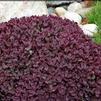
|
Sedum 'Lemonjade'Stonecrop
Diversify your fall Sedum offerings with this unique yellow flowered selection. Unlike most autumn stonecrops which have pink flowers, ‘Lemonjade’ bears large 5-7” panicles of bright citron yellow flowers which completely cover the top of the foliage in early fall. As the cold weather sets in, the seed heads take on rosy peach tones.
This is a compact selection with a stocky, upright mounded habit. It does not split open when it blooms like so many older Sedums do. Its grey-green, toothed foliage remains clean all season long.
Tall, upright sedums form substantial clumps of foliage which can be substituted for shrubs in the landscape. Their stout, sturdy stems support the massive flower heads which develop in summer and burst into bloom in fall. If left standing, they provide winter interest and food for birds.
[
More Info
]
|

|
Sedum 'Lime Zinger'Stonecrop
No other Sedum combines the colorful foliage display and groundcover type habit quite like ‘Lime Zinger’. Succulent apple green leaves are edged in cherry red and grow into a tight weed suppressing mat that is just 4” tall. The carpet of colorful foliage is topped with large clusters of soft pink flowers from late August through September here in Michigan.
Low, spreading Sedums form a solid mat of foliage which is excellent for covering slopes or can be planted as a groundcover in sunny, dry areas. They are extremely drought tolerant and many are evergreen. These are terrific low-maintenance plants that always look their best.
Sedum SUNSPARKLER® Series--This colorful new series of Sedum comes from the breeding work of Chris Hansen. After several years of hybridizing and evaluating in his West Michigan field trials, Chris has selected only the best, most unique cultivars for introduction in his new SUNSPARKLER® series.
His first three introductions are colorful groundcover types that were selected from over 4,000 seedlings. They all retain their attractive coloration from spring through fall and are free of the leaf scorch that can often plague Sedums. Their compact habit and unique foliage/flower combinations greatly broaden the range of groundcover type Sedums that are currently on the market. They can also be used in combination containers and green roof systems.
Like all Sedums, they thrive on neglect and show their best colors when grown dry and in full sun.
[
More Info
]
|

|
Sedum 'Little Miss Sunshine'Stonecrop
This groundcover is perfect for rock gardens, containers, or the front of the border. Tiny and tidy, it is covered in bright yellow flower clusters on glossy green leaves from early to midsummer.
[
More Info
]
|

|
Sedum 'Matrona'Stonecrop
Large, pastel pink blooms in late summer and fall. Plant is vase-shaped with shiny red stems and deep gray foliage edged in rose pink.
[
More Info
]
|

|
Sedum 'Popstar'Stonecrop
Blue-green foliage gives way to salmon pink flowers in late summer, covering this hardy easy-care Sedum until attractive pink seed pods appear. Loads of late season appeal.
[
More Info
]
|

|
Sedum 'Pure Joy'Stonecrop
In the spring, very small, sharply serrated leaves emerge a cool shade of blue green, a color reminiscent of the lovely Sedum sieboldii. They formed a perfectly rounded, low mound that was perfect for edging the front of the border.
As the plant aged through the season, the leaves expanded and turned lighter green, forming a short, semi-upright clump.
When late summer and early fall arrived, we understood exactly why the breeder had selected this plant for its flowers. A massive dome of bubblegum pink, star-shaped flowers completely covered the foliage followed by deeper pink seed heads later in fall.
This plant pairs perfectly with other fall bloomers like hardy garden mums, asters, and Black-Eyed Susans. Try a few in containers and at the front of the border.
[
More Info
]
|

|
Sedum 'Superstar'Stonecrop
Smoky turquoise foliage covered in bright rose pink blooms in late summer, followed by dark purple seed heads. With its exquisite color and low-mounded habit, this will truly is a superstar of the perennial border!
[
More Info
]
|

|
Sedum acreStonecrop
Deep green succulent foliage carpet is covered with yellow flowers in June. Foliage turns red in fall. Re-seeds. Good container plant.
[
More Info
]
|

|
Sedum kamtschaticum 'Weihenstephaner Gold'Stonecrop
Low growing, fleshy green foliage turns red in winter. Tiny, star-shaped, gold flower clusters appear June through August. Similar to S. kamtschaticum with smaller, denser foliage. Drought tolerant.
[
More Info
]
|

|
Sedum kamtschaticum var ellacombeanumSecum, Pachy
Fleshy green leaves covered with mounds of lemon yellow flowers June through September. A great ground cover for dry slopes and banks. Foliage turns varying shades of red in autumn. Extremely drought tolerant. Referred to as "Pachy Sedum" since its leaves resemble the foliage of Pachysandra.
[
More Info
]
|

|
Sedum rupestreStonecrop, Blue Spruce
Narrow-leaved succulent foliage resembling the needles of blue spruce. Yellow flowers in June. Fast growing evergreen foliage forms dense mat. Heat and drought tolerant.
[
More Info
]
|

|
Sedum rupestre 'Angelina'Stonecrop
Brilliant golden-yellow, needle-like foliage forms dense colorful mats. Evergreen foliage turns reddish-orange in cooler months and throughout winter. Yellow flowers in early summer. Excellent for rock gardens and mixed containers. Easy to grow fast spreading sedum. Drought tolerant. A 2002 ISU Perennial Award for Best New Introduction.
[
More Info
]
|

|
Sedum spectabile 'Neon'Stonecrop
This upright selection sports brilliant rosy-magenta pink flowers and light green foliage. A sport of "Brilliant' with broader flower clusters and more consistent, vibrant color.
[
More Info
]
|

|
Sedum spurium 'Fuldaglut FULDA GLOW'Stonecrop
Bronze-red low growing foliage forms a solid mat and keeping its color all season long. Rose-red flowers appear in august and September. Excellent when massed. Heat and drought tolerant.
[
More Info
]
|

|
Sedum spurium 'John Creech'Stonecrop
Tightly clustered green foliage with pink flowers in late May and June. Vigorous and grows easily in well-drained soil.
[
More Info
]
|

|
Sedum spurium 'Voodoo'Stonecrop
Deep reddish-bronze, almost black foliage on cascading stems. Rosy red flowers in summer. Low growing, mat forming foliage, eventually forms a thick carpet. Tolerates some light shade. Drought tolerant.
[
More Info
]
|

|
Sedum ternatumStonecrop, Woodland
Blooms late April through May.
[
More Info
]
|
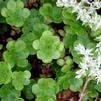
|
Senecio aureusRagwort, Golden
[
More Info
]
|

|
Senecio (syn Packera) obovatusSquaw-Weed
[
More Info
]
|

|
Sesleria autumnalisGrass, Autumn Moor
Cool season, clump-forming ornamental grass with narrow flower spikes rising above the foliage clump in summer to 18" tall. Flowers give way in autumn to silvery-white inflorescences. Attractive, narrow, yellow-green foliage. This grass is indigenous to the moors of Europe and puts on its best flowering display in autumn, hence the common name.
[
More Info
]
|

|
Silphium terebinthinaceumPrairie Dock
[
More Info
]
|

|
Sisyrinchium angustifolium 'Lucerne'Grass, Blue-Eyed
Bright blue star shaped flowers with gold centers rise above fine, Iris-like foliage from late April or early May until July. Excellent for edging.
[
More Info
]
|

|
Solidago 'Golden Baby (syn Goldkind)'Goldenrod
Dwarf variety has bright yellow flower plumes August through September. Low-growing, compact foliage forms an attractive dark green mat. Chicago Botanic Garden "Best Plants for the Midwest".
[
More Info
]
|

|
Solidago drummondiiGoldenrod, Cliff
Graceful, arching stems are crowded with tiny, bright yellow, daisy like flowers in late summer to fall. Flowers attract butterflies and other pollinators. Basal leaves generally dry up and disappear by flowering time but leaves toward the top of stems remain. Plant Cliff Goldenrod where it can hang over a rock wall for a be
[
More Info
]
|

|
Solidago flexicaulisGoldenrod, Zigazg
[
More Info
]
|

|
Solidago rugosa 'Fireworks'Goldenrod
Impressive, lacy sprays of golden yellow flowers in September and October. Flower clusters radiate out in all directions and resemble fireworks on arching bushy foliage. Basal foliage is evergreen. Extremely drought tolerant, as exhibited at Alwerdt's Gardens in Altamont, Il during the summer 2002 drought.
[
More Info
]
|

|
Solidago speciosaGoldenrod, Showy
Dense, erect clusters of bright yellow flowers top tall reddish stems in late summer and early fall. "Speciosa" is Latin for "showy," and this goldenrod certainly fits that bill. Clump forming.
[
More Info
]
|

|
Solidago sphacelata 'Golden Fleece'Goldenrod, Broad-Leaf
Bright yellow flower plumes August through September. Low-growing, compact foliage forms an attractive dark green mat. Make a good ground cover when massed.
[
More Info
]
|

|
Solidago (syn Oligoneuron) rigidaGoldenrod, Stiff
Bright, true yellow, flat-topped flowers bloom in late summer and early fall. The flowers provide nectar and birds relish the seed. Clump forming.
[
More Info
]
|
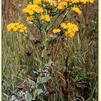
|
Soreopsis verticillata 'Crazy Cayenne'Coreopsis, Threadleaf
This vibrant orange Coreopsis that has a perfectly domed, rounded, uniform habit. 1.75" wide, fiery sunset orange flowers have intense red-orange color concentrated at the centers of the petals. The undersides of its petals are golden yellow, with some petal tips displaying the same golden yellow. The flowers will cover the gray-green, threadleaf foliage for a showy midsummer display.
Coreopsis is easy to grow, making it a good choice for beginners. One plant will provide you with long-lasting cut flower bouquets all summer long.
[
More Info
]
|

|
Sorghastrum nutansGrass, Indian
Upright clumps of slender, blue-green leaves turn golden yellow in fall. Stiff, vertical flowering stems, topped with 12" long, narrow, light brown flower panicles with yellow stamens, rise well above the foliage in late summer.
[
More Info
]
|

|
Sorghastrum nutans 'Indian Steel'Grass, Blue Indian
Steel blue foliage with hints of light green. Five-foot flower spikes topped with yellow flowers. Beautiful bronze fall color. With these attributes, Blue Indian Grass is one of the most attractive native grass cultivars. In addition, it is drought tolerant, tolerates poor soils, and requires little maintenance. This is a great choice for sustainable landscapes, natural areas, and modern designs that demand structured, yet restful, form and texture. Sorghastrum nutans 'Indian Steel' performs best in full sun. Rich soil and too much fertilizer will cause weak growth and flopping. Indian grasses attract songbirds and provide shelter for gamefowl. Blue Indian Grass is a seed selection of native Sorghastrum nutans.
[
More Info
]
|

|
Sorghastrum nutans 'Sioux Blue'Grass, Blue Indian
This seedling of 'Osage' was selected by Rick Darke who saw great potential in its powder blue foliage and erect habit. This is a clump-forming grass that turns yellow in the fall, then fades to tan and remains standing through most of the winter. In late summer, copper brown flowers with conspicuous bright yellow pollen sacs attached are produced. They make wonderful cut and dried flowers. This heat tolerant, disease resistant, clumping forming grass is native to North American prairies.
[
More Info
]
|

|
Spartina pectinataGrass, Prairie Cordgrass
[
More Info
]
|

|
Spigelia marilandicaIndian Pink
Indian pink is a clump-forming, Missouri native perennial which occurs in moist woods and streambanks in the far southeastern part of the State. Features one-sided cymes of upward facing, trumpet-shaped, red flowers (to 2" long) atop stiff stems growing to 18" tall. Each flower is yellow inside and flares at the top to form five pointed lobes (a yellow star). Flowers bloom in June. Glossy green, ovate to lance-shaped leaves (to 4" long).
[
More Info
]
|

|
Sporobolus heterolepisGrass, Prairie Dropseed
Fine textured tufts of green foliage turn gold or deep orange in autumn. Pink flowers appear in August with fragrant seeds. Heat and drought tolerant. Attracts songbirds and wildlife.
[
More Info
]
|

|
Sporobolus heterolepis 'Tara'Grass, Prairie Dropseed
A useful compact, vegetatively propagated selection of the native Prairie Dropseed. The flowers and vase-shaped habit of Tara are much more upright than the seed propagated species. Attractive orange red autumn color. Flowers are very aromatic. Elegant in the landscape in mass or as a specimen. Very drought tolerant.
[
More Info
]
|

|
Sporobolus wrightiiGrass, Giant Sacaton
Gray-green foliage sports airy clouds of flowers atop tall stems in summer. This grass is good as a single specimen or in a group as a showy backdrop. Fast growing. Drought, heat and salt tolerant. Supstitute for Pampas Grass.
[
More Info
]
|

|
Stachys byzantina 'Fuzzy Wuzzy'Lamb'S Ears
Velvety soft,silver-gray leaves are shaped and feel like a lamb's ear. Lavender flower on short spikes in July. Tolerates drought, heat and humidity. Remove spent flower stems to tidy.
[
More Info
]
|

|
Stachys byzantina 'Helene von Stein (syn Big Ears)'Lamb'S Ears
Huge, velvety soft, greenish-silver leaves are shaped and feel like a lamb's ear. Non flowering variety stays neat and tidy, doesn't melt out as easily as other cultivars Tolerates drought, heat and humidity. Also known as 'Big Ears'. Leaves are twice the size of 'Silver Carpet'. Tolerates drought, heat and humidity. Grow in moist, well-drained soil.
[
More Info
]
|

|
Stachys monieri 'Hummelo'Betony
Striking, rosy lavender, bottlebrush flower spikes on sturdy stems July through September. Forms rounded clumps of textured foliage with extended season interest.
[
More Info
]
|

|
Stachys officinalis 'Densiflorus'Betony
Bright lavender-pink flower spikes appear June through August above extremely dense, compact rosettes of green, glossy foliage. Good for the edge of the border.
[
More Info
]
|

|
Stokesia laevis 'Honeysong Purple'Aster, Stokes'
Large, royal purple flowers with contrasting white stamens on purple-tinged stems. Flowers are 4" in diameter. Compact form. Grows best in filtered light and well-drained soil. PPAF
[
More Info
]
|

|
Stokesia laevis 'Peachie's Pick'Aster, Stokes'
[
More Info
]
|

|
Stylophorum diphyllumPoppy, Celandine
Blooms April through June and frequently into July.
[
More Info
]
|

|
